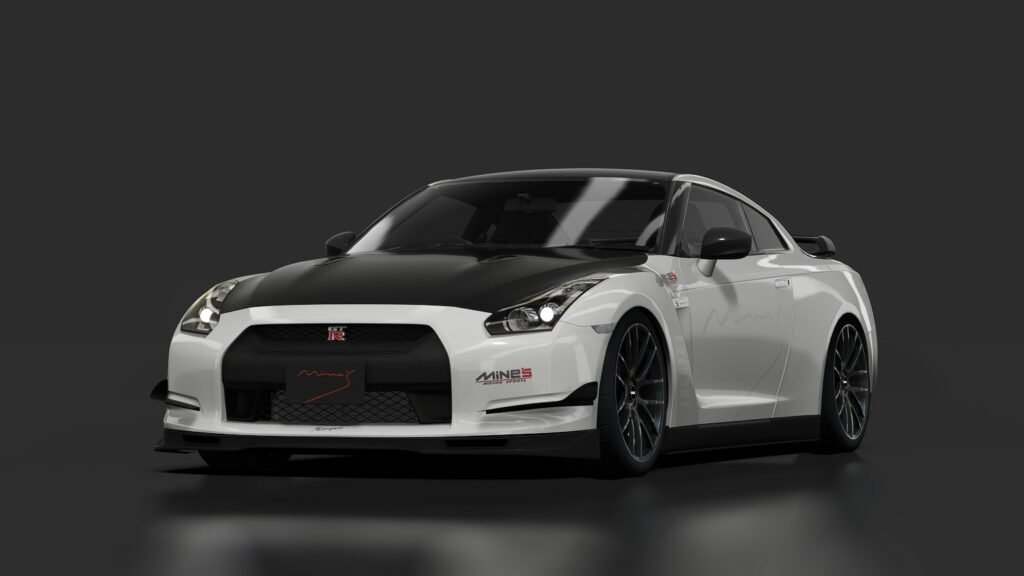
{{ galleryProps.activeIndex + 1 }}/1
Descrição
The Nissan GT-R busted onto the automotive scene at the 2007 Tokyo Motor Show. It was Nissan's return to the high-performance market and their answer to the Porsche 911 Turbo. It boasted performance equal (and sometimes more) to cars costing twice as much. In the past years, it's proven itself to be one of the fastest production cars around any racetrack.
Nissan fans that waited anxiously for the car flocked to the new R35 GT-R and the car made new fans where the old R32, R33 and R34 Skyline GT-Rs were never released. It was loaded with state of the art technology that Nissan's Chief Vehicle Engineer Kazutoshi Mizuno proudly says something in the nature of "we've done everything you can possibly do to make it fast and nothing else should be done to it".
Thus tuning the R35 was thought to be an unwavering challenge and the entire car would be an absolute black box, which turned out to be true - to a point. But there are always exceptions in this world. There is never a code that cannot be deciphered, a map that cannot be read and a box that cannot be opened. In this case, our...
The Nissan GT-R busted onto the automotive scene at the 2007 Tokyo Motor Show. It was Nissan’s return to the high-performance market and their answer to the Porsche 911 Turbo. It boasted performance equal (and sometimes more) to cars costing twice as much. In the past years, it’s proven itself to be one of the fastest production cars around any racetrack.
Nissan fans that waited anxiously for the car flocked to the new R35 GT-R and the car made new fans where the old R32, R33 and R34 Skyline GT-Rs were never released. It was loaded with state of the art technology that Nissan’s Chief Vehicle Engineer Kazutoshi Mizuno proudly says something in the nature of “we’ve done everything you can possibly do to make it fast and nothing else should be done to it”.
Thus tuning the R35 was thought to be an unwavering challenge and the entire car would be an absolute black box, which turned out to be true – to a point. But there are always exceptions in this world. There is never a code that cannot be deciphered, a map that cannot be read and a box that cannot be opened. In this case, our Doctor Robert Langdon is Michizo Niikura of Mine’s.
Niikura has been tinkering with Nissan’s for more than 20 years and he has become one of the top respected GT-R tuners in the world. The Yokusuka tuner’s signature pearl white R32 to R34 GT-Rs are all over YouTube and have become legendary everywhere around the world.
Mine’s was one of the first tuners to get their hands on the R35 when the car first came out in late 2007. Surprisingly they already had parts and a demo car displayed a month later at the 2008 Tokyo Auto Salon in January.
Going back to the GT-R being a car not suited for tuning, Niikura and his team were well aware of this concept behind the car. But it didn’t faze him because Mine’s own concept has always been to enhance the natural characteristics of the stock car and not just adding crazy features. So if Nissan was skeptical about aftermarket tuning, why not just concentrate on improving what Nissan had already done?
For example: if you change the shape of the front fender and rear wing it may slow down the vehicle. Mine’s choice was to leave the shape as it was. However, Mine’s changed the material of the front lip spoiler, front grill, front canards and rear wing to carbon-fiber to make it lighter. The intake duct covers and the roof antenna for the GPS are also carbon. As you can see intricate details go into the goal of making a lighter and faster car.
Mine’s carefully chose what they wanted to do to improve the overall performance of the GT-R. Despite being blistering fast, the Mine’s GT-R is very drivable and gentle on the streets.
Credits:
Base: Polyphony Digital
Convertion to Assetto Corsa: 101Creative
Mine’s version: LG7
Mine’s body parts taken from: Sayrx R35
Rear lights: Mushrooms
Livery: kaizoshiro aka alice/kaizo
3d tips and help: Spirit
Download Link
Recursos
•
ABS
•
Chamas no Escapamento
•
Controle de Tração
•
Limpadores de Parabrisa
•
RainFX
Simulador:
Assetto Corsa
Marca:
Nissan
Modelo:
GT-R
Potência:
800 cv
Torque:
830 nm
Peso:
1.680 kg
Peso/Potência:
2,10 kg/cv
0 - 100:
2,20 s
Cores:
5
Tração:
Integral - AWD
Autor:
101Creative, LG7
Versão:
1.5














